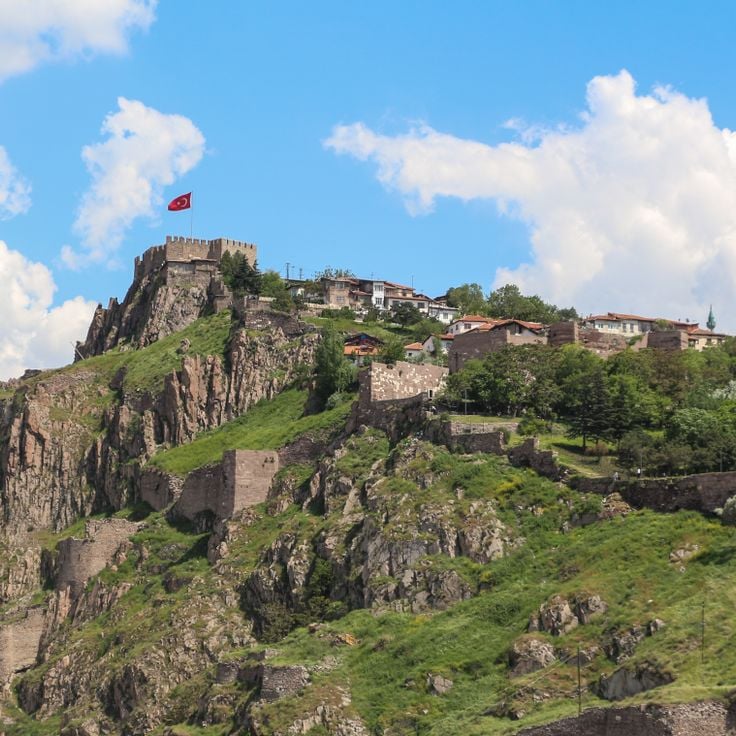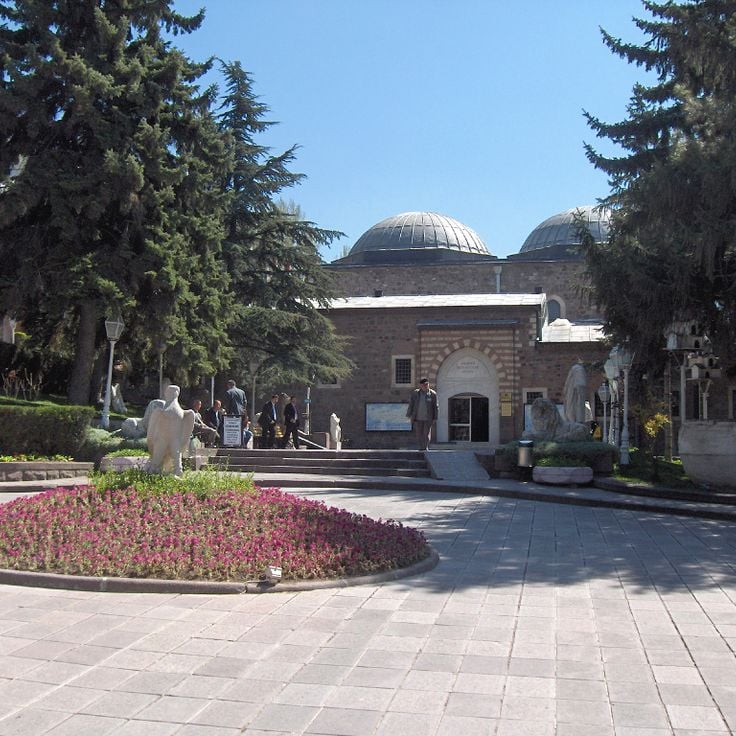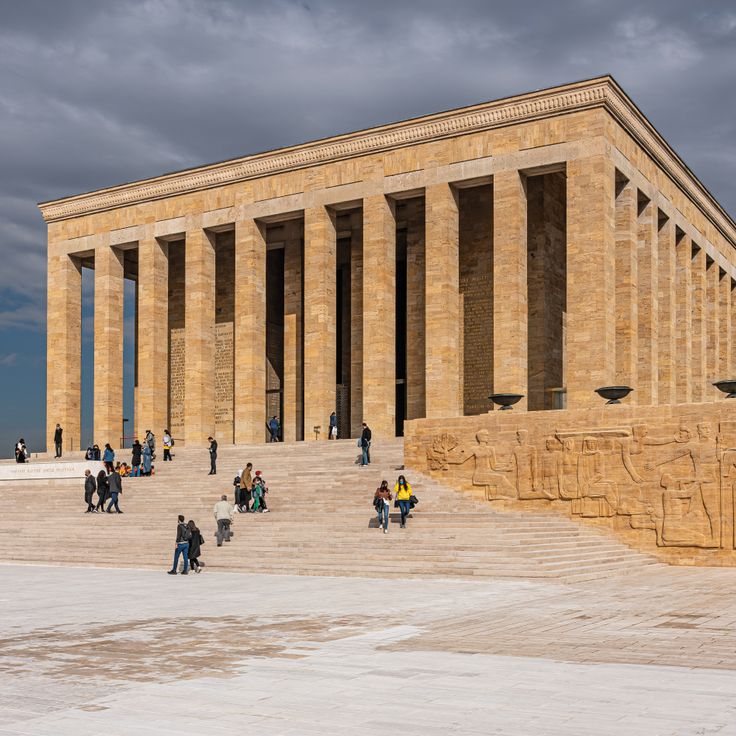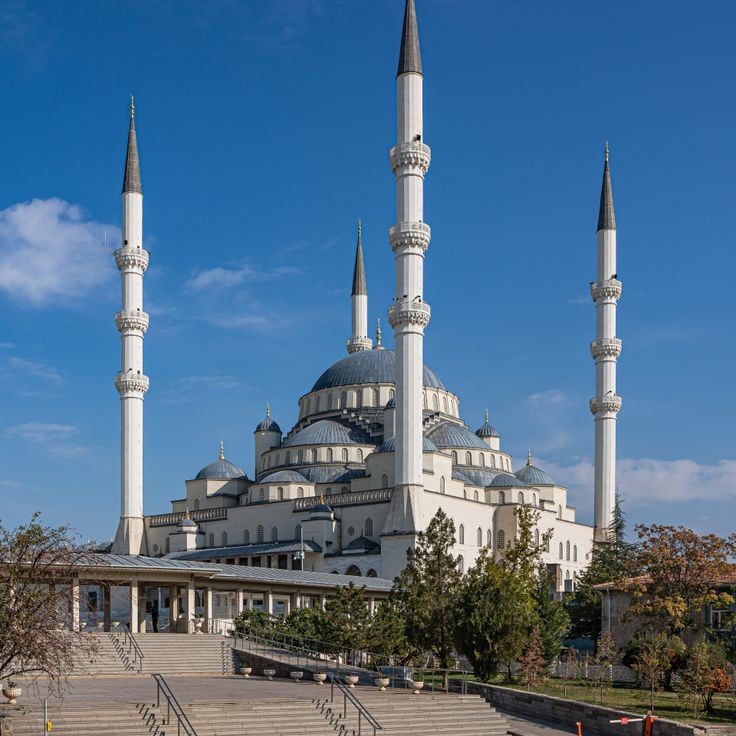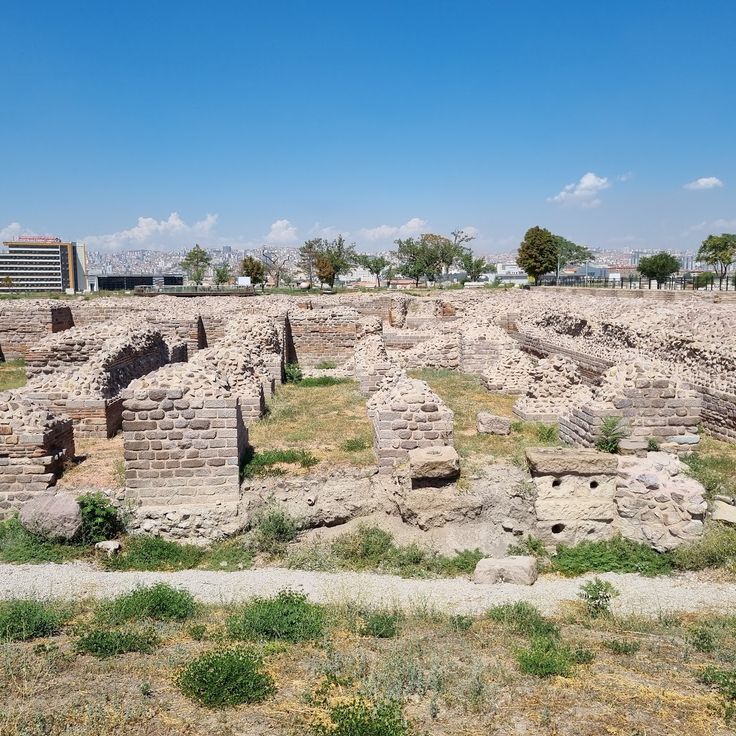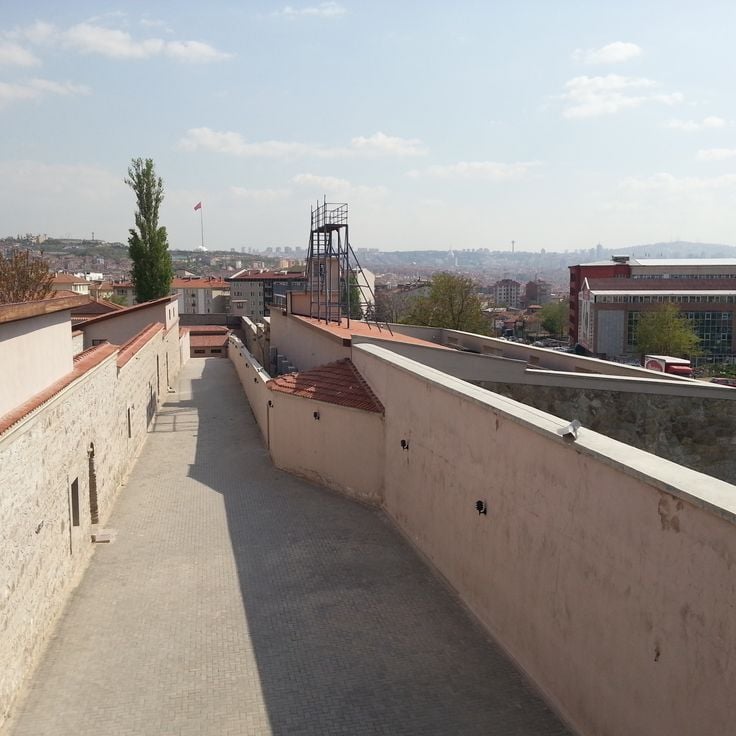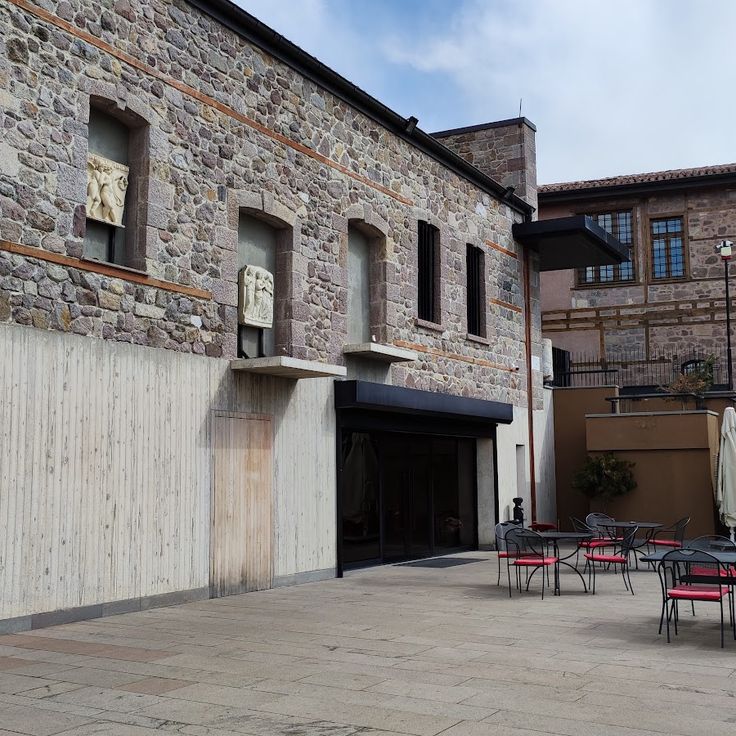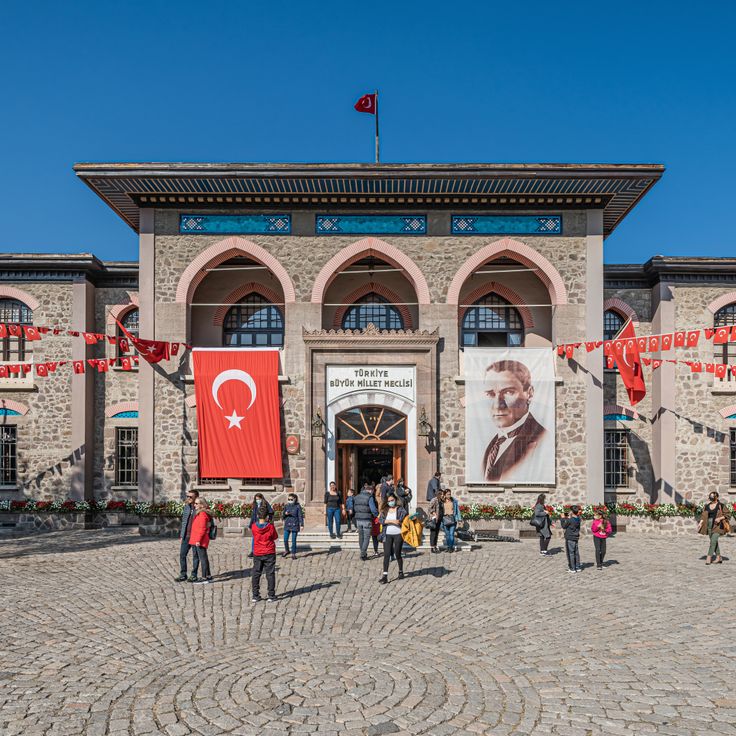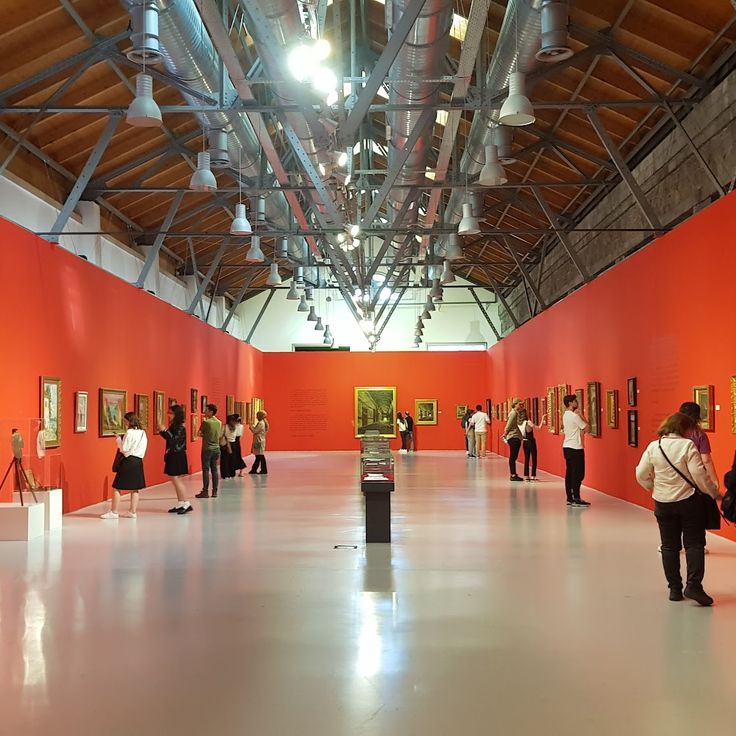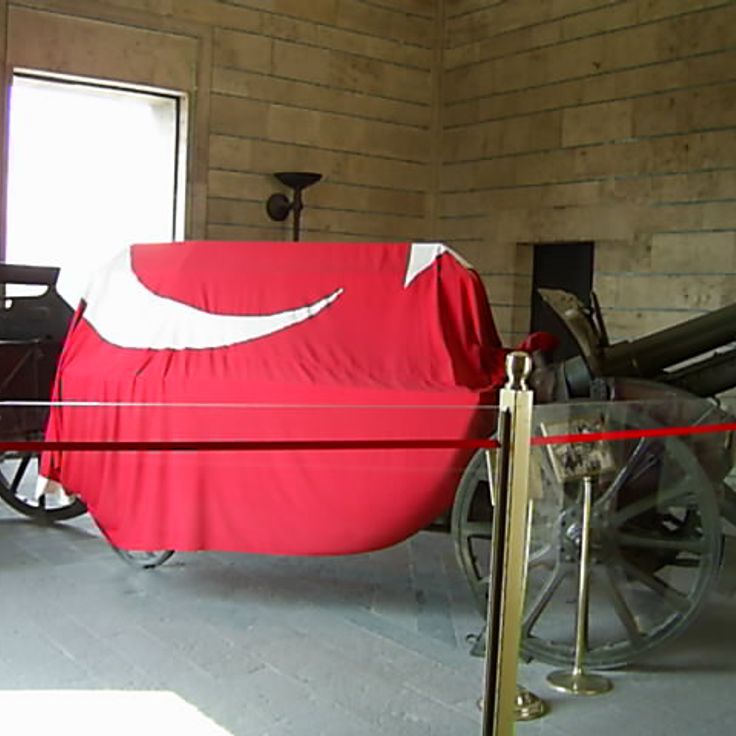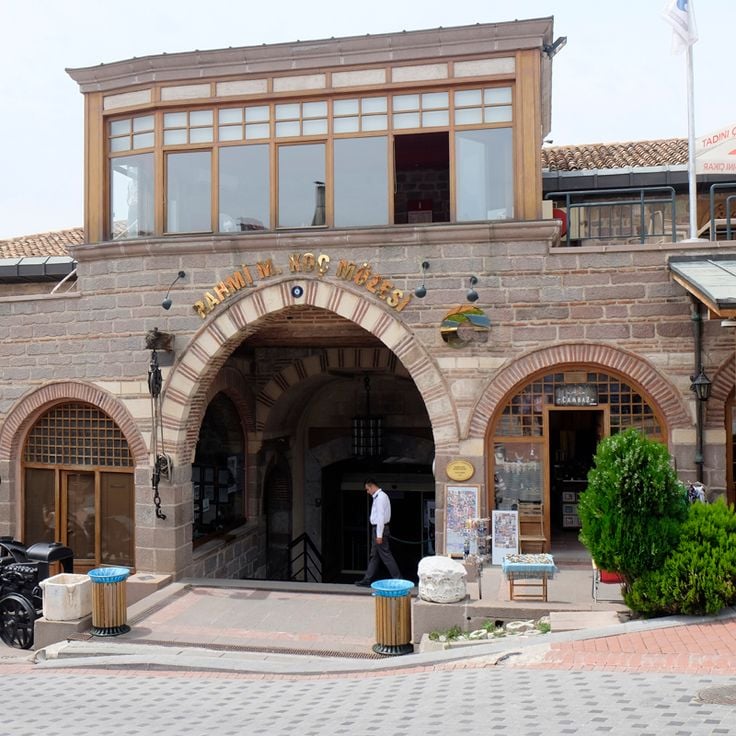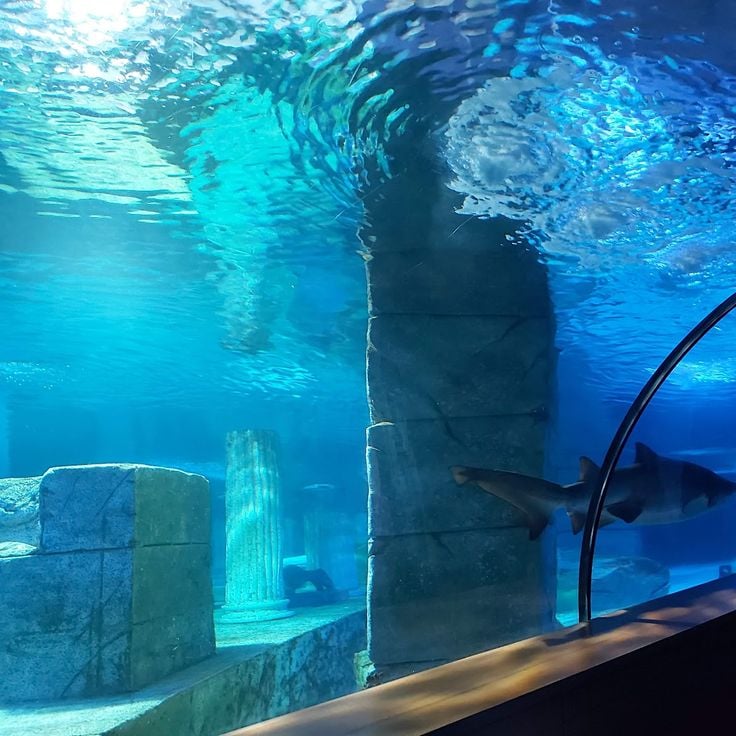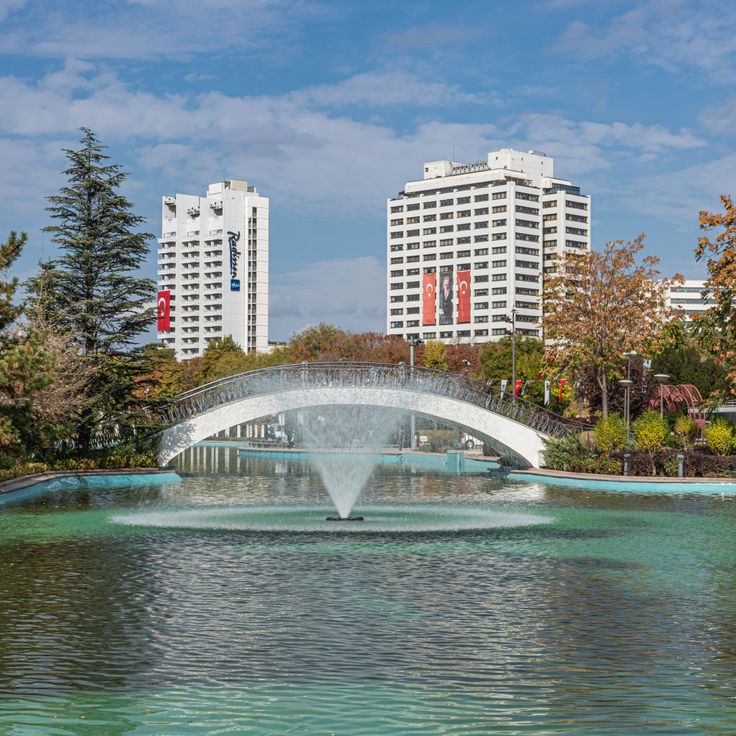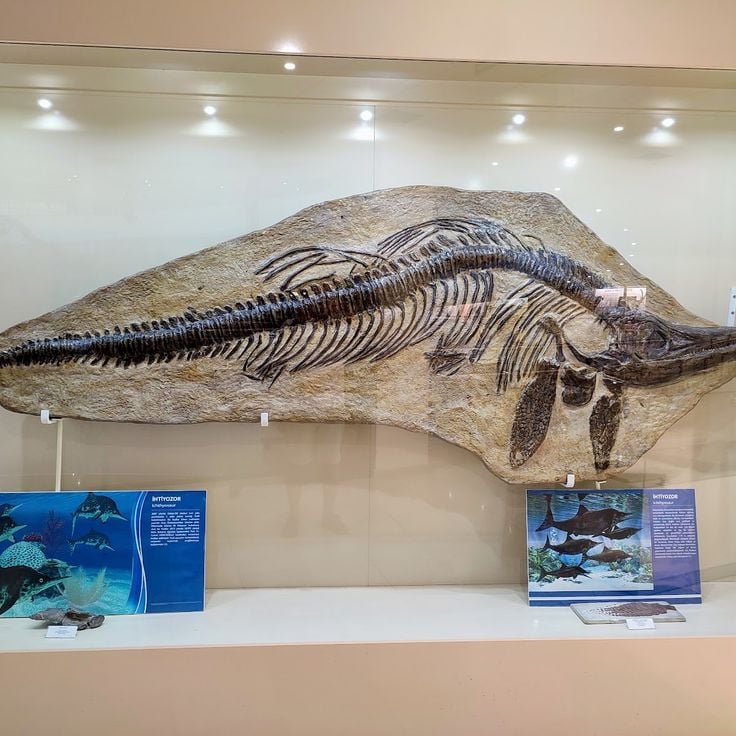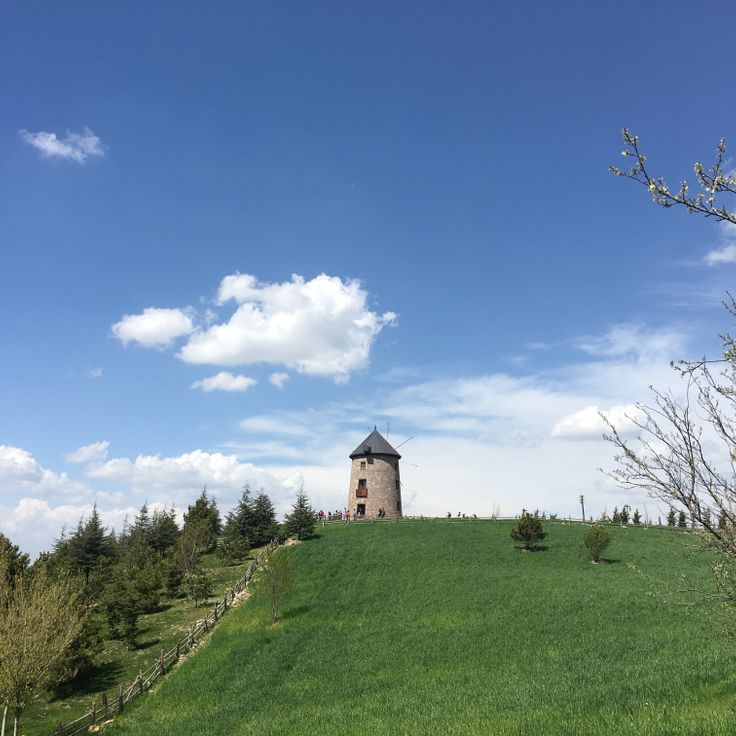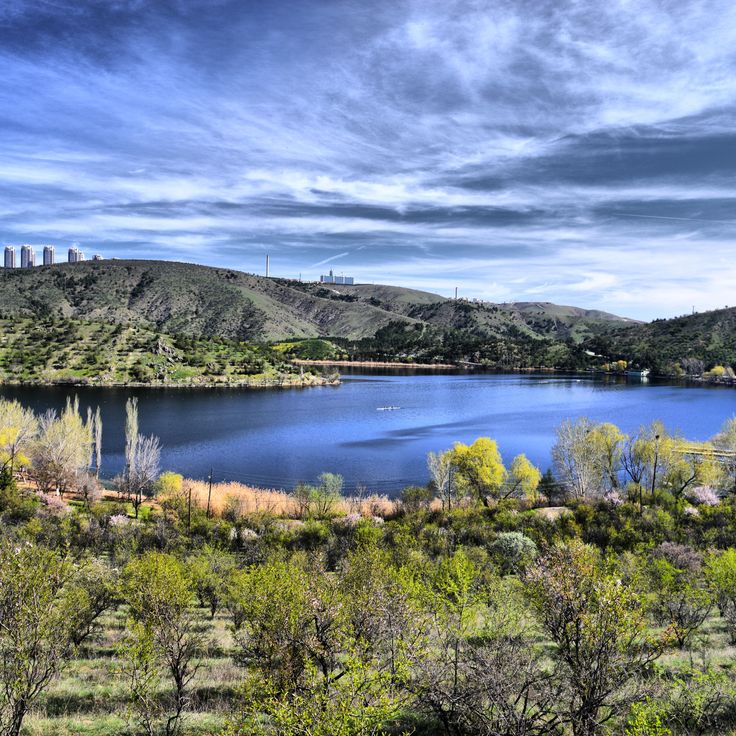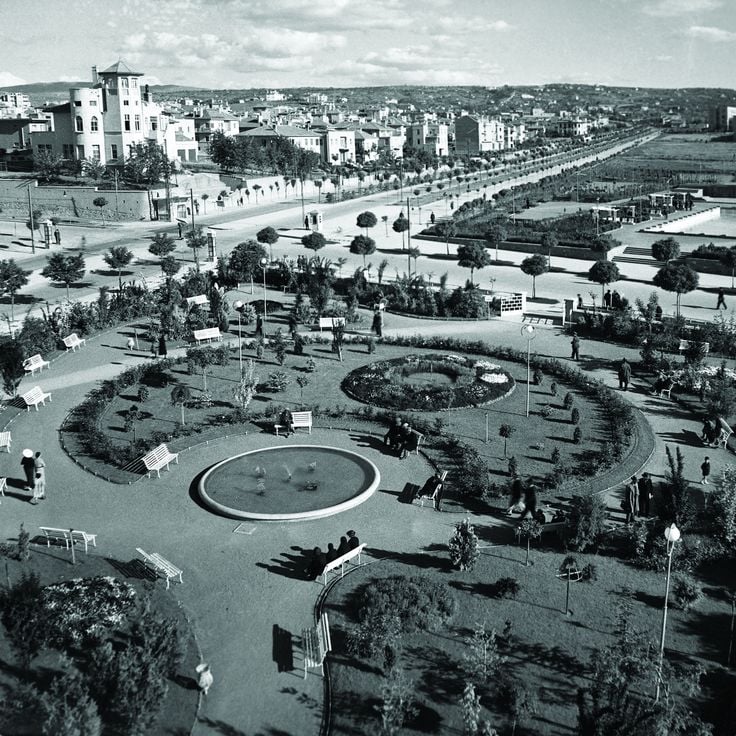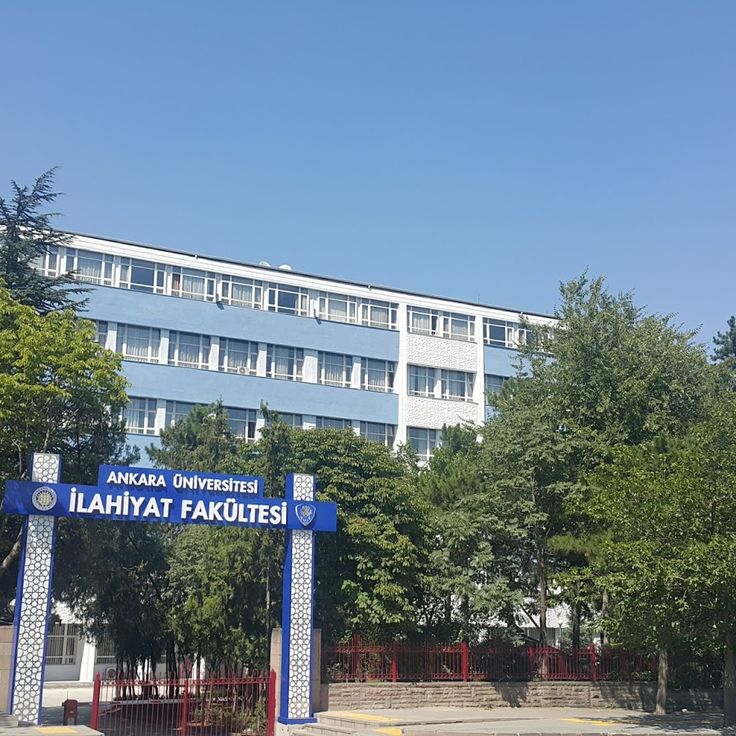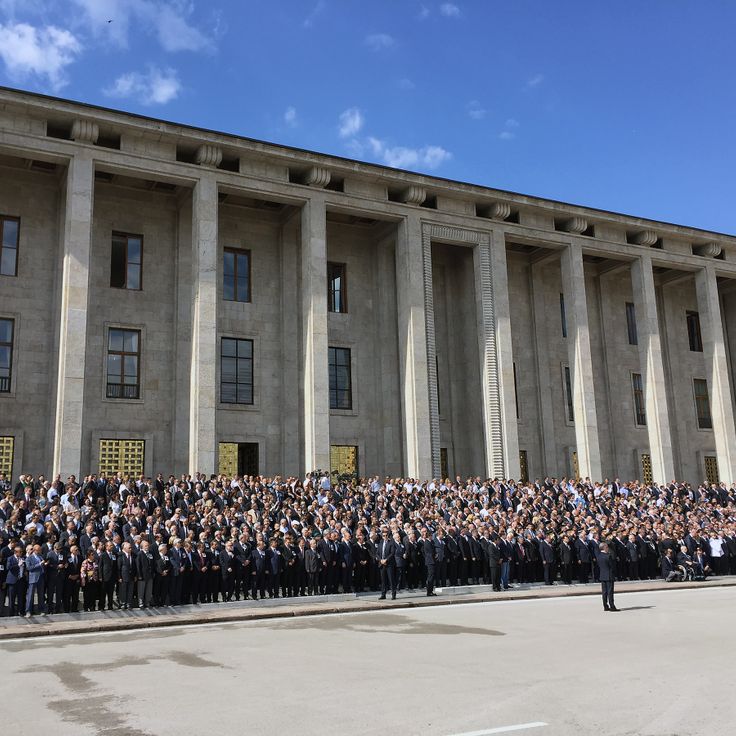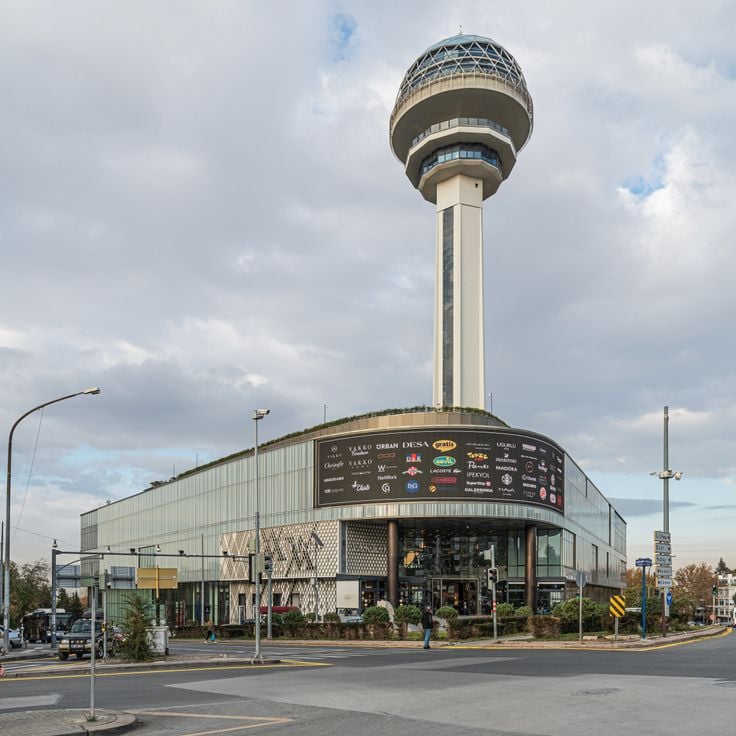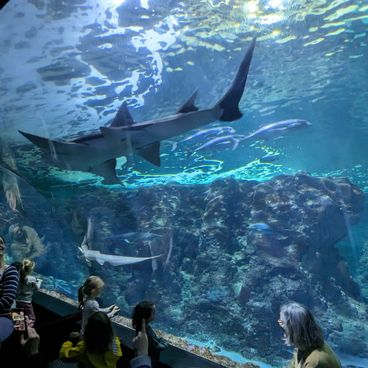Ankara, the capital of Turkey, features evidence of twenty-five centuries of history. The Ankara Citadel overlooks the city from its hill at 978 meters above sea level, with 16-meter-high stone walls. The Museum of Anatolian Civilizations occupies a 15th-century Ottoman caravanserai and displays archaeological collections from the Paleolithic to the classical era. Atatürk’s mausoleum, built in 1953, exhibits personal items and documents of the founder of the Turkish Republic in its 3,000 m² museum. Roman remains include the Augusteum from the first century BC, decorated with Latin and Greek inscriptions, as well as the Roman Baths from the third century. Religious landmarks reflect different periods: the Hacı Bayram Mosque from 1427 retains its marble decorations and Ottoman calligraphy, while the Kocatepe Mosque, completed in 1987, can hold up to 24,000 people. The Ethnographic Museum displays costumes, carpets, and musical instruments from Turkish regions, completing a journey through the cultures and civilizations that shaped this Anatolian city.
The Ankara Citadel is a military fortification built on a hill at 978 meters above sea level. This fortress shapes the historical Ankara with its 16-meter-high stone walls and defensive ramparts. The structure overlooks the old town and displays construction phases from Byzantine to Ottoman times. It stands as a testament to Ankara's strategic importance across the centuries.
The Museum of Anatolian Civilizations in Ankara occupies a 15th-century Ottoman caravanserai and houses archaeological collections spanning the Paleolithic period to classical antiquity. The museum displays objects from daily life, religious artifacts, and works of art that reveal how people lived in this region across millennia. Walking through the galleries, visitors encounter pottery, sculptures, tools, and inscriptions that tell the story of human settlement and cultural development in Anatolia.
The Atatürk Mausoleum in Ankara is a central monument within this collection of the city's historical sites. Completed in 1953, this structure houses a 3,000 square meter museum displaying personal belongings, photographs, clothing and official documents of Mustafa Kemal Atatürk. The complex encompasses the monumental tomb structure, a ceremonial plaza and several exhibition halls that document the life and achievements of the founder of the Turkish Republic.
The Hacı Bayram Mosque stands in the historical center of Ankara and represents Ottoman religious architecture from 1427. The prayer hall of this mosque features marble decorations and ornamental calligraphic work that showcases the craftsmanship of the period. The building continues to serve as an active place of worship and draws visitors interested in understanding how Ottoman structures were built and decorated.
The Temple of Augustus was built in the first century BC and preserves Latin and Greek inscriptions on its outer walls. This Roman sanctuary documents the achievements of Emperor Augustus and serves as key evidence of Ankara's ancient history. Within this collection of historical monuments, museums, and archaeological sites, the Temple of Augustus shows how far back the city's roots reach into classical times.
The Kocatepe Mosque in Ankara is a large religious building with four minarets, constructed between 1967 and 1987. The prayer hall of this mosque can accommodate up to 24,000 worshippers and ranks among the largest mosques in the Turkish capital. It stands as a modern religious landmark alongside historical sites like the Ankara Citadel and the Museum of Anatolian Civilizations, which document the history of twenty-five centuries.
The Roman Baths of Ankara are archaeological remains of a public bathing complex from the third century. These ruins display preserved foundations, several columns, and sections of the original walls. They reveal how Romans built their structures and how people lived in the ancient city. These baths are among the significant Roman remains in Ankara, alongside the Augusteum from the first century BC.
This former state prison built in 1925 offers insight into the history of incarceration in Ankara. The museum displays restored cells that show how inmates lived, along with personal items and historical documents. Walking through the building, visitors see the daily conditions and the ways the prison system changed over time. It tells human stories from a difficult chapter of the city's past and stands alongside other landmarks that reveal Ankara's complex history spanning 25 centuries.
The Ethnographic Museum displays Turkish folk culture through collections of traditional costumes from different regions of the country. Hand-knotted carpets, everyday craft objects, and musical instruments document the cultural diversity of Turkish regions. This museum is housed in a historical building from the 1920s and forms part of Ankara's journey through the cultures and civilizations that shaped this Anatolian city.
This limestone column in Ankara commemorates the visit of Roman Emperor Julian in 362. Rising 15 meters high, the monument towers over the city and bears Latin inscriptions that record this historical event. As part of Ankara's Roman remains, this column shows the traces of twenty-five centuries of history that have shaped this Anatolian city.
The Postal Museum in Ankara displays archives, stamps, and postal equipment that document the development of Turkish postal services from the 19th century to the present. The museum contributes to a broader exploration of the capital's historical monuments, museums, and archaeological sites, where evidence spans twenty-five centuries.
The Museum of the Republic in Ankara occupies a building constructed in 1920 that served as the seat of Turkey's first Grand National Assembly until 1924. After the parliament relocated, the building was transformed into a museum dedicated to the Turkish War of Independence. The exhibitions document the political and military events of the founding period of the modern Turkish Republic through photographs, documents, and personal belongings of historical figures from that era. The Museum of the Republic offers visitors a direct view into the early days of Turkish statehood and contributes to understanding Ankara's historical journey.
Cermodern is a cultural center in Ankara housed within renovated former railway buildings and opened in 2010. It complements Ankara's historical sites by hosting art galleries, a performance hall, and a café set within spaces that once served the city's industrial past. The venue brings together the city's industrial heritage with contemporary culture, adding another layer to your exploration of Ankara's twenty-five centuries of history.
The Atatürk Museum stands in Ankara's historic core and preserves the residence where Mustafa Kemal Atatürk, founder of the Turkish Republic, lived from 1921 to 1932. Original furniture, personal items, and documents reflect this formative period of Turkish history. The rooms remain arranged as they were during Atatürk's lifetime, offering a direct view of his daily life and the values that shaped modern Turkey.
The Rahmi M. Koç Museum in this collection of Ankara's historical monuments occupies a 16th-century caravanserai called Çengelhan. The museum shows the history of transport, industry, and communications technology. The exhibits include vehicles, machinery, and technical equipment displayed within the historic building, offering a view of industrial development over time.
The Aqua Vega Aquarium in Ankara offers visitors a modern experience to explore aquatic life alongside the city's historical monuments and archaeological sites. This four-floor facility houses 32 tanks containing more than 120 species of freshwater and marine fish. A 20-meter underwater tunnel allows visitors to observe aquatic life from an immersive perspective, providing a different kind of connection to the natural world.
The Hamamönü District in Ankara showcases restored Ottoman houses from the 19th century and contributes to this collection exploring the historical monuments, museums, and archaeological sites of this Anatolian capital. Cobblestone streets connect artisan workshops, antique shops, and tea houses. Renovated buildings display traditional Ottoman architecture with wooden facades and characteristic courtyards.
Gençlik Park in Ankara is a large green space in the center of the city that provides room for leisure and recreation. The park has several playgrounds for children, sports facilities, cycling paths, and picnic areas. During summer months, this park regularly hosts cultural events, concerts, and exhibitions that draw residents and visitors to the Turkish capital. It forms part of Ankara's range of historical monuments, museums, and archaeological sites.
The MTA Natural History Museum in Ankara was founded in 1935 as a scientific institute. This museum displays minerals, rocks, fossils, and gemstones from Turkey and other countries. It offers permanent exhibitions on geology that give visitors insights into Earth's historical development and mineralogical variety. The museum contributes to Ankara's collection of historical monuments, museums, and archaeological sites that define the capital of Turkey.
The Altınköy Open Air Museum contributes to Ankara's rich historical narrative by showcasing Anatolian rural architecture through a reconstructed village. The site features traditional houses from different regions, a working mill, a village mosque, and several craft workshops. This museum helps visitors understand the historical lifestyles and building techniques of Anatolian village communities, offering insights into the everyday cultures that shaped this region over centuries.
The Erimtan Museum in this collection of Ankara's historical monuments and archaeological sites houses around 2000 archaeological objects from antiquity. The exhibition spreads across three restored Ottoman buildings in the historic castle district of Ankara. The museum displays artifacts from various periods of Anatolian history, including Hellenistic and Roman sculptures, coins, ceramics, and jewelry. The renovated 19th-century houses provide an authentic setting for the displayed collections.
Eymir Lake is a natural water reserve located in Ankara that serves as a gathering place for residents seeking outdoor recreation. The lake features developed cycling paths along its shores and several fishing spots where visitors can try their luck. Families and sports enthusiasts regularly visit the surrounding areas to walk, cycle, and engage in various open-air activities. The lake provides a welcome escape from city life and a chance to connect with nature.
Kızılay Square is the beating heart of modern Ankara and a key stop in exploring the city's commercial and administrative life. This junction connects several metro lines and sits surrounded by shops, restaurants, banks, and government offices. The square functions as a primary gathering place for residents and visitors, showing the everyday rhythm of the Çankaya district alongside the historical monuments that tell Ankara's story across twenty-five centuries.
Dikmen Valley Park in Ankara covers 40 hectares and features hiking trails, playgrounds, and cafés distributed throughout the valley. This green space serves as a recreational area for residents and visitors of the Turkish capital, offering a natural retreat within the city.
The Ankara School of Theology is a center for religious education established during the Seljuk period. The building displays architectural features of 14th-century Islamic art and served for the training of theologians and scholars. As part of Ankara's historical monuments and archaeological sites, this school offers insight into the religious and intellectual history of a city shaped by more than twenty-five centuries of cultures and civilizations.
The Grand National Assembly is the seat of the Turkish parliament and was built between 1937 and 1938 following the designs of Austrian architect Clemens Holzmeister. This building fits into Ankara's rich history spanning 25 centuries and merges modern design principles with classical architectural elements. It reflects the political and structural ambitions of the early Turkish Republic and stands as a key symbol of the founding of the modern Turkish state alongside other historical monuments and museums in the city.
Atakule Tower stands as a modern landmark in Ankara, completed in 1989. This concrete and steel structure rises 125 meters above the city. Within this collection exploring Ankara's historical monuments and museums, Atakule Tower shows how the city has grown beyond its ancient past. An observation deck sits at 92 meters, offering views over the Turkish capital and the landscape beyond. A revolving restaurant rotates slowly over the course of an hour, allowing diners to see different parts of the city. Shopping areas occupy the lower floors of the building.
